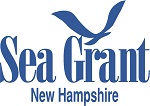Thank you to all of the attendees of the ‘Inaugural’ Green Crab Working Summit! It was a successful event and we hope that you learned a lot!
The proceedings for the event are now available or the presentations from the Green Crab Working Summit 2018 are available for download below; to view a list of attendees, please click here.
The East Coast wave of the green crab invasion occurred 200 years ago and they have since firmly established themselves from New England to Prince Edward Island, Canada, wreaking ecological and economic havoc along the way. We are not the first to research and propose solutions to reign in these nuisance crustaceans, in fact some of the ideas and work being presented and discussed over the next several days have been proposed or attempted in the past. However, in the years since people have been investigating this problem, not one, long- term, lucrative, eco-beneficial and viable mitigation/control plan has actually been truly successful at achieving this. There are many reasons for this, including lack of funding, processing capabilities, technology and perseverance. Green crabs are successful invaders because they possess many biological and physiological properties that allow them to exploit diverse habitats, withstand broad ranges in temperature and salinity, as well as the ability to survive out of water and without eating for extensive periods. Along with few natural predators and high fecundity, green crabs are very likely the ‘model’ invasive species that have gone unchecked for too long.
However, the time to finally get a handle on this invasive crustacean appears to have arrived. The combination of warming ocean temperatures, increasing regulations on wild harvest fisheries, fish populations at historically low levels, as well as continued demand for fresh, local seafood and continued devastation of shellfish fisheries and estuarine and coastal habitats by these crustaceans, has led to the perfect confluence of factors driving the need for population control while also developing diverse uses and markets for this nutritious and abundant crab that happens to be an invasive species. Controlling green crabs populations has the potential to positively impact shellfish fisheries through reduced predation, create new economic opportunity for fishermen, bring a new, local and abundant seafood product to the region, AND restore biodiversity and critical estuarine, marsh and coastal ecosystems. The possible uses and products from green crabs that have high market potential are many, and their development and manufacture are critical. The time to develop and investigate in these products is now, and it is why we decided to put together this summit. We want to bring all stakeholders to the table and see what we can learn from each other that will be helpful, feasible and ultimately successful in mitigating this nuisance species. Let’s use our broad and vast expertise to explore, develop and expand markets, biocontrol methods and the potential of a green crab ‘Fishery’.
LET’S DO THIS!
Sincerely, The Steering Committee
- Dr. Marissa McMahan (Co-lead, Manomet, Inc.),
- Dr. Gabriela Bradt (Co-lead, New Hampshire Sea Grant and UNH Cooperative Extension),
- Mary Parks (Green Crab R&D Project),
- Roger Warner (Green Crab R&D Project)
To download the presentations, click on the green titles. For other presentations, please email your request to Marissa McMahan.
Session 1: Population monitoring/ecological impacts
- Understanding Green Crab Population Dynamics: Results of Systematic Green Crab Trapping in Freeport – Brian Beal
- Green Crabs and Soft-Shell Clams: Results from Large-Scale Field Studies Examining Measures to Mitigate Predator Effects on Clam Survival and Growth – Sara Randall
- Measuring Impacts of Invasive European Green Crabs on Maine Salt Marshes: A Novel Approach – Jeremy Miller
- Coastal Restoration in Nova Scotia: Resilience to an Invasive Species – Gabrielle Beaulieu
- Attributes of the European Green Crab (Carcinus maenas), a Nonindigenous Species In Massachusetts, USA – Jimmy Elliot
- Interaction between Carcinus and Hemigrapsus – Chris Baillie
Session 2: Green crab products
- Food Chain– Roger Warner
- The use of green crab extract as a food supplement, and as Bait, for commercially important invertebrates – Steve Jury
- Green Crab Uni Extraction: Maintaining the true form- Jamie Bassett
For more information, visit https://www.greencrabnation.com/. - Bait to Delicacy: Navigating and Redefining the Green Crab Market – Mary Parks
- Toward Full Utilization of the Green Crab Biomass: Food and Feed Ingredients -Denise Skonberg
- Potential Health Benefits of Green Crab Peptides Produced with Commercial Enzymes– Bouhee Kang
Session 3: Soft-shell crab
- Soft-shell green crab production: adapting traditional Venetian production techniques – Jonathan Taggart
Presentation:
Taggart Green Crab Working Summit Anotated no video_part 1
Taggart Green Crab Working Summit Anotated no video_part 2
Taggart Green Crab Working Summit Anotated no video_part 3 - Investigating the viability of a soft-shell green crab industry in New England – Marissa McMahan
- Determining peak molting periods for European green crabs in New Hampshire – Gabriela Bradt
- Soft-Shell Green Crab in Prince Edward Island: New Strategies and Techniques – Luke Poirier







